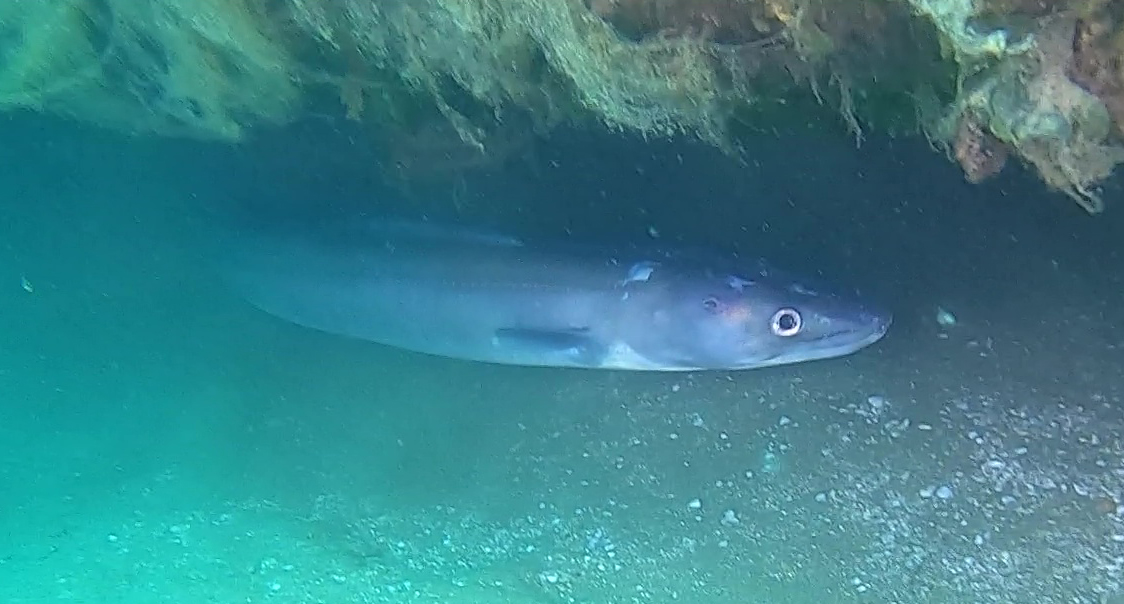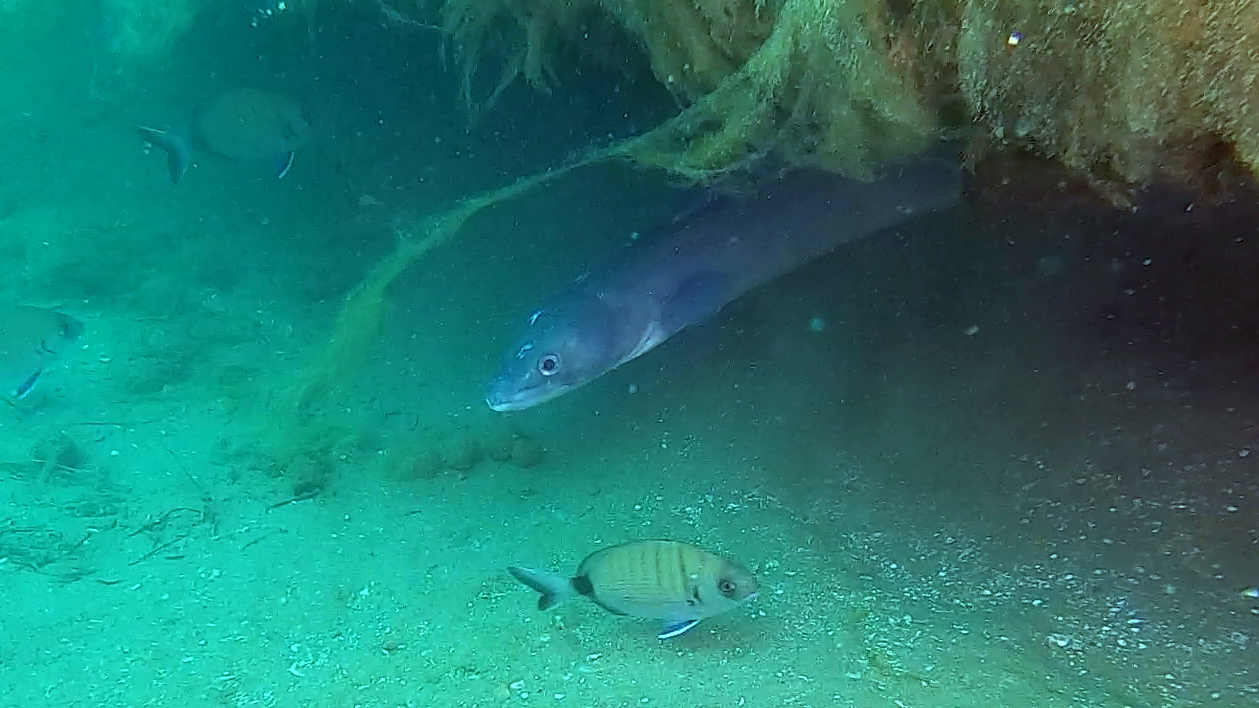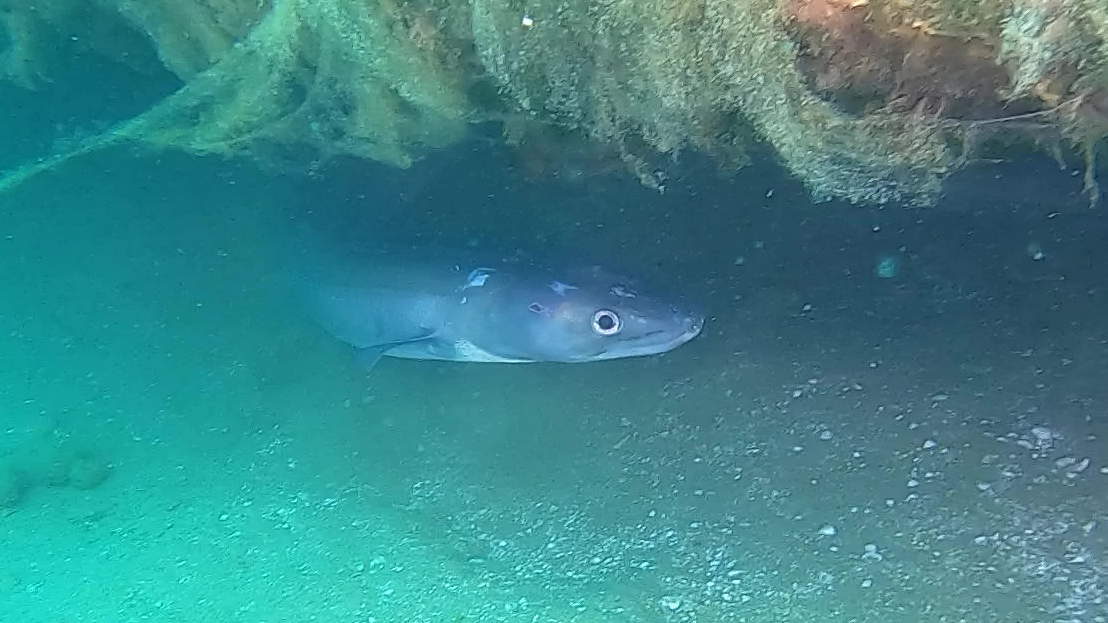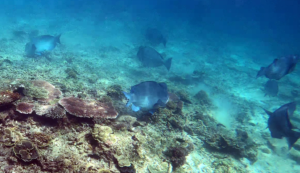Conger (European conger – Conger conger) is one of the first marine species of the Mediterranean Sea that colonizes wrecks and we met it right among the plates of one of the many wrecks on which we often dive. It is a nocturnal predator species that lives in caves and ravines during the day and then hunts on the seabed during the night.
In this video, shot in a few tens of meters of depth, we see it sharing this habitat together with other typical species of the Mediterranean Sea that find shelter in a wreck, such as the sparids, seabreams in this case, and molluscs such as oysters, as can be seen, numerous and of a certain size along the edges of the plates.
Common conger (Conger conger Linnaeus 1758), is a bony sea fish belonging to the Congridae family.
Distribution and habitat
Widespread in the Atlantic Ocean, from Norway to Senegal, in the Mediterranean Sea and in the western Black Sea. Very common in Italian seas, it can be found from minimum depths of a few meters up to 300 metres. Specimens have also been captured at depths of more than 1100 metres. Frequent among the rocks and in wrecks but can also often be found on soft bottoms.
Description
It has the typical appearance of the Anguilliformes with joined dorsal, caudal and anal fins similar to those of an eel. It has smooth, flaky skin. The eyes are quite small and are separated by a large flat space. Elongated muzzle, wide mouth (reaches the center of the eye), equipped with two rows of teeth, with large lips. The maxilla is protruding on the mandible. The dorsal fin begins at the apex of the pectoral fins. The anterior nostrils are placed on top of tentacles which are found at the apex of the snout.
The color is variable, from beige to almost black (the specimens that live on hard bottoms are usually darker) with a white belly. A row of white specks line the sideline. The uneven fin is edged in black. This fish can reach gigantic dimensions: up to three meters by 70 kilograms with a body diameter of over 20 centimeters but usually does not measure more than one meter. Females are much larger than males.
Behavior
The conger eel has similar habits to the moray eel: it lives in rocky ravines from which it comes out at night to hunt. Once settled in a burrow it is rare for it to move away from it. It is the typical inhabitant of wrecks resting on sandy or muddy bottoms. Specimens living in sandy environments without burrows sink into the sediment during the day.
Diet
Exclusively carnivorous, it feeds on benthic invertebrates (it is a great hunter of octopuses) and fish. He doesn’t disdain dead fish.
Reproduction
It takes place in the summer. It seems that conger eels reproduce only in very specific places (one of these has been identified in Sardinia at Punta Scoglietti, Stintino, another between Gibraltar and the Azores Islands), at depths exceeding 500 metres. The larvae are leptocephalic.
https://it.wikipedia.org/wiki/Conger_conger
https://en.wikipedia.org/wiki/European_conger
Gallery
 English
English Italiano
Italiano






